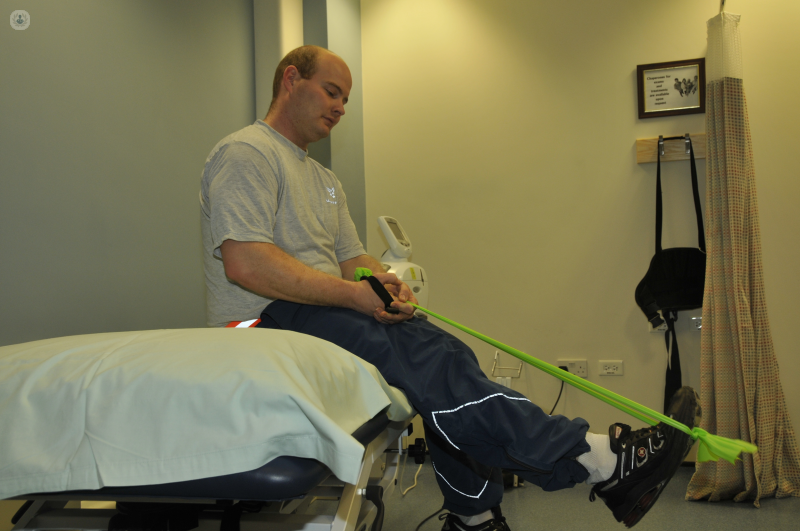Enhanced recovery pathways – getting you back on your feet!
Autore:Recovering from a big operation such as a hip replacement can be a challenge. The body has to recover its strength and ability to move around as normal, which can take some time. This is why there are now enhanced recovery pathways designed to optimise the recovery process to get you back on your feet as soon as possible. Leading orthopaedic surgeon Mr Ian Holloway explains.
What would you say are the biggest challenges during the recovery from hip and knee replacement surgery?
The biggest challenges during recovery from hip and knee replacement are pain control, avoiding light-headedness in the early post-operative phase, and regaining strength and mobility. These issues are targeted by the enhanced recovery pathway, which focuses on optimum pain control, and early mobilisation.
The pain control protocol uses a multimodal approach, combining the benefits of spinal anaesthetic when possible, local anaesthetic cocktail infiltration of the wound at the end of surgery, and a standardised regular pain control regime after the operation, specifically geared to avoid some of the traditional side effects of pain medication, such as nausea, light-headedness and constipation.
Light-headedness is also reduced by a multimodal protocol to reduce blood loss during surgery. This includes:
- Pre-operative correction of anaemia
- Spinal anaesthetic, which reduces intraoperative blood loss
- Tranexamic acid – a safe and effective medication which reduces blood loss. It is delivered intravenously during surgery
- Modern cauterisation systems – these allow better control of bleeding during surgical dissection.
The other main aspect of the pathway focuses on rehabilitation, and is tailored to helping the patient regain mobility faster, with the patient standing and taking some steps on the same day of surgery, rapidly improving over the next two or three days to the point where they can go up and down stairs, and early supported discharge home.
What are enhanced recovery after surgery (ERAS) protocols?
These protocols have been shown to be safe, and, if anything, have lower risks than more traditional approaches, where the patients would spend longer in bed after their surgery, longer in hospital and be at a higher risk of complications like blood clots and chest infections. Enhanced recovery has also been shown to be effective in other surgical specialities such as colorectal surgery, urology and gynaecology.
What can patients do before hip or knee replacement surgery to make their recovery easier?
Prior to hip and knee replacement surgery, the patients can undergo a prehabilitation programme. This starts a number of weeks before the operation and is based on the provision of information about exercises. Patients meet with the hospital team, including physiotherapists, and are taught exercises to improve their strength and help their subsequent recovery. The information provided also informs the patients about all other aspects of care, and acts as a useful reference for things like driving, preparing the home for when they return from hospital, including clearing tripping risks such as cables and loose rugs, and the use of walking aids, e.g. crutches.
Using the enhanced recovery pathway, patients have less pain, better function, higher satisfaction rates and are able to go home and return to their normal lives earlier than they otherwise would.



